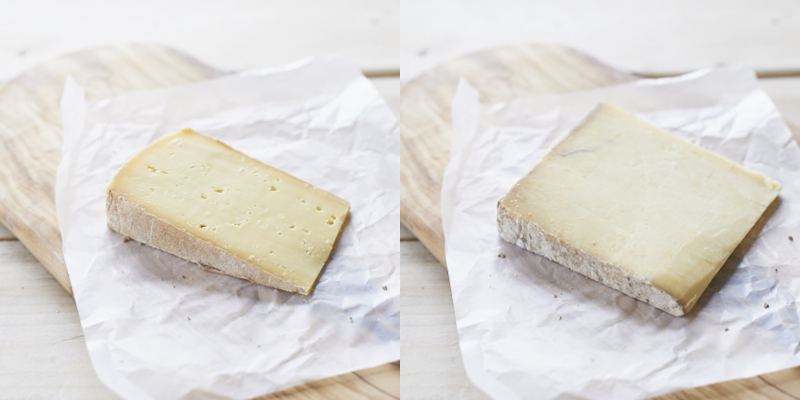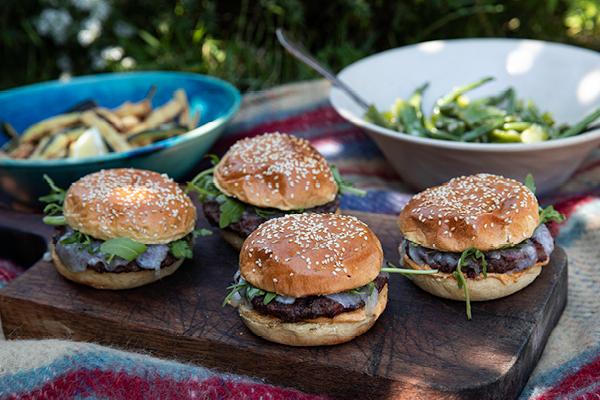By Swaledale Butchers
To celebrate National Burger Day and August bank holiday, we must return to an age-old debate:
What cheese works best on a burger?
To enhance the flavour of a Swaledale steak burger, Swaledale Butchers and the Courtyard Dairy have partnered up to help you pick the right cheese.
Sliced processed cheeses are often favoured as a topping for burgers, but it’s important to note that they are not entirely composed of cheese. For instance, a cheese slice found in a McDonald’s burger contains approximately 60% real cheese, while other varieties of processed cheese generally range from 50% to 60% traditional cheese. The remaining ingredients, often unpronounceable and the length of your arm, consist of salt, food dyes, preservatives, unspecified dairy, emulsifiers, and other artificial additives.
Processed cheeses are mass-produced and cheaper than real cheese; it’s designed to achieve a certain consistency, at the expense of quality and taste. While processed cheeses have their advantages, such as their meltability, stability, and texture, they often lack the depth of flavours that can be found in artisan cheeses. In our view, processed cheeses and their synthetic ingredients just can’t compete with the complex flavours offered by traditionally crafted cheeses.
We generally look for two qualities in the cheese on our burger: strength of flavour and even melting with no ‘oiling’ or ‘greasiness’. Often cheeses exhibit one but not the other. The best ‘melter’ will be a cheese that has a slight acidity to it, a reasonably high level of moisture, and a good fat content so that the protein, fat, and calcium can all interact as the heat is applied.

Milder softer Cheddars and continental younger mountain-style cheeses (Comte, Gruyère) have this perfect technical balance to melt really nicely, splitting and giving you a bit of ‘stretch’ (hence why they’re often used in sauces). However, they can be a bit mellow in flavour.
Often cheeses that have a stronger taste have been aged longer and have a lower moisture content. Their drier, crystalline nature is great for flavour but tends to go brown and can give off oil. This means they often don’t melt so well and go ‘crisp’ when cooked (think of Parmesan, or the British farmhouse alternative – Old Winchester).
So, with all that in mind, what cheese should I place atop my burger? A sharp-tasting Cheddar? A nutty Gruyère? A creamy Brie? Or a tangy blue? To help us through this flavoursome conundrum. We asked three specialists.
Andy Swinscoe, one-half of the Courtyard Dairy, stressed the importance of finding an equilibrium between flavour and meltability. ‘For me, the best balance between the two would be a medium aged Cheddar, Leicester cheese, or Gruyere that is still soft to the touch (pliable) at room temperature but has a bit of flavour to it – Hafod is one of my favourites; or a raclette style like Ogleshield (leave the rind on in this case!). For continental cooking cheese classics such as Gruyère and Comte, get one not too long-aged – try for one about 18 months to get the depth of flavour and for it to be supple enough to melt well.’
George Ryle, Swaledale Butcher’s in-house chef informed us about the virtues of Gruyère or St James cheeses with a burger. ‘Melted Gruyère and on top of that as much finely diced, fresh green chilli as you fancy. Slices of marinated beetroot and watercress beneath a patty with melted St James over the top provide a simple twist.’ Wise words.
While Patrick McGuigan, food journalist and cheese writer championed the excellence of Ogleshield cheese on his burger. ‘I love a thick slice of Ogleshield melted on a good burger. It’s a supple washed rind cheese, made by Montgomery’s in Somerset, using rich Jersey milk, which has an earthy, funky flavour that adds an extra hit of umami to a burger.’
So, there you have it. Not a processed cheese in sight.
Top Tips
● Make sure the burger and cheese are at room temperature before you start cooking. The cheese will melt better and not cool the burger.
● Look for a cheese that is hard but pliable and easily sliced at room temperature (not crumbly, squeaky or dry). Medium-aged Cheddars, Comtes, and Gruyères work well.
● For something special, you should try Hafod or Ogleshield cheeses.






